
JW Fishers' Splash in the Empire State
by distributing more than 1 billion gallons of clean drinking water each day to 9 million New Yorkers and collects 1.3 billion daily gallons of wastewater through a vast underground network of pipes, regulators and pumping stations. The wastewater is then treated in order to protect the quality of New York Harbor. As the primary agency responsible for New York City's environment, DEP also regulates air quality, hazardous waste and critical quality of life issues such as noise pollution. JW Fishers said it supports this mission by supplying the agency with the tools needed to examine these waterways
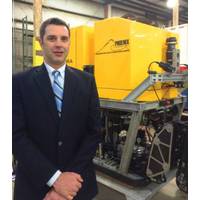
Herbert Joins Phoenix International
on the Seine and assisting The Bent Prop Project with WWII aircraft location in Palau. Before entering the private sector he served as a NOAA hydrographer aboard NOAA ships RUDE, RAINIER, and on two NOAA Navigation Response Teams based in Norfolk, VA and New York, NY. Survey areas included New York Harbor, Boston Harbor, Narragansett Bay, Chesapeake Bay, Puget Sound, and the coastal regions and fjords of southeast and southwest Alaska. Mr. Herbert worked in support of fleet logistics at NOAA’s Atlantic Marine Center and received the NOAA Office of Marine and Aviation Employee of the Year

Bouchard Simulation Center Opens at SUNY Maritime
go to school here (SUNY Maritime), to give them a good foundation when they graduate to come and be employed in an industry that is booming and lacking qualified employees right now,” said Morton S. Bouchard, III. “The way it came about was really simple: we always had a simulator in New York Harbor, and the company that was operating that simulator moved it down to Houston. So we partnered with SUNY Maritime to build a first-class simulator on campus that would not only benefit cadets, but would benefit our employees. We’re going to do our training here with our captains and mates
Stevens Receives Port Grant to Bolster Coastal Resiliency
scalable supercomputer that is being named Pharos - the Greek word for lighthouse. Pharos will reside in the new Stevens “Hyperscale Supercomputer Center,” presently under construction. The grant will also support purchase and installation of 26 new sensors to be deployed in New York Harbor to measure water levels, temperature and salinity every six minutes and transmit that data in real time to the Stevens supercomputer. Communication of forecasts to the public is a key aspect of the research. The new system will create dynamic, web-based informational materials that relate
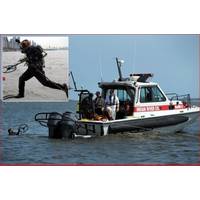
Underwater Metal Detectors for Law Enforcement, Commercial Diving
work, inspection and repair of dry docks, piers and a variety of other tasks. The company is affiliated with a number of professional organizations including the Association of Diving Contractors International and the Society of Maritime Port Engineers. In a recent cable laying project across New York harbor, Randive’s divers used their JW Fishers Pulse 8X detector to locate metal obstructions and mark them for removal. For this job, the 16 inch search coil was attached to the detector’s electronics unit providing greater penetration into the muddy bottom. In another project, the 8X
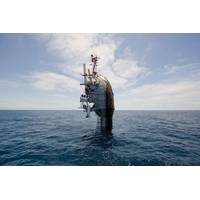
Sailing for Science
do some habitat mapping for fisheries for resources. “ Hydrographic ships have an advanced multi-beam system for ship-mounted charting, as well as two-four launches for working at the bays and inlets. A ship like the Thomas Jefferson, for instance, assisted with post-Sandy recovery in New York Harbor. The ship deployed its launches, to see where all the wreckage was and determine what needed to be cleared, while the ship went and steamed its track lines with a multi-beam to determine what was there In the main part of the channel. So it’s a combination of equipment and the specialists
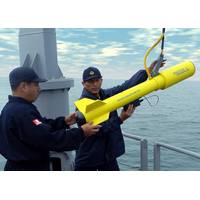
Marine Industry Employs Boat Towed Detectors
detector. With the ability to detect both ferrous and nonferrous targets, the Pulse 12 can locate all types of debris as well as find and track buried pipelines. Halfway around the world in the U.S. is Phoenix Marine, one of the most successful marine and underwater construction firms in the New York Harbor area with extensive experience in difficult above and below water rehabilitations. They have several barges equipped with full dive stations and 35 ton or 100 ton cranes, and a 90 x 86 foot concrete placement barge with mixer, concrete pump, bins for sand and stone, and silos for holding cement
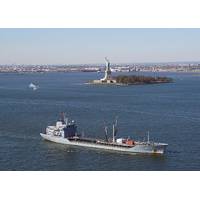
New, New York Harbor Current Meter
NOAA uses data from a new current meter in New York harbor operated by New Jersey’s Stevens Institute of Technology. The system provides enhanced real-time information to mariners travelling through the nation’s second busiest port. The Stevens current meter measures the direction, speed, and volume of ocean currents in the harbor’s navigation channels, north of the Narrows between Brooklyn and Staten Island. Its data will be used in NOAA’s Physical Oceanographic Real-Time System (PORTS®) system, which delivers real-time environmental observations, forecasts
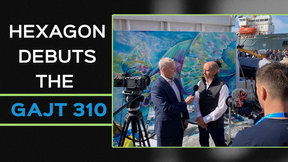
 February 2025
February 2025




